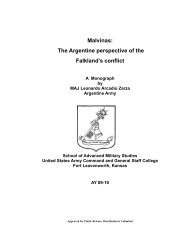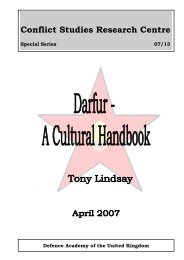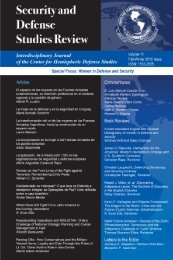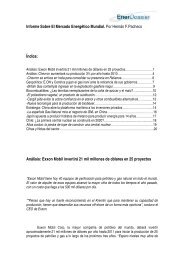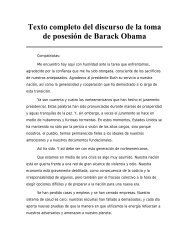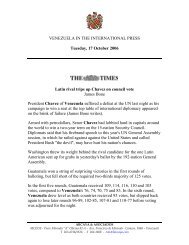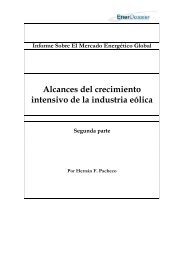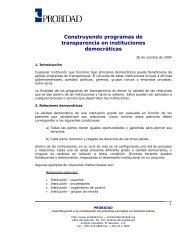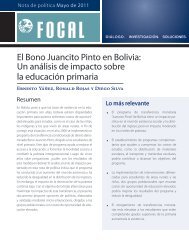Security and Defense Studies Review - Offnews.info
Security and Defense Studies Review - Offnews.info
Security and Defense Studies Review - Offnews.info
You also want an ePaper? Increase the reach of your titles
YUMPU automatically turns print PDFs into web optimized ePapers that Google loves.
Influenza P<strong>and</strong>emic <strong>and</strong> its National <strong>Security</strong> <strong>and</strong>Macroeconomic Implications for JamaicaD. Ramjee Singh, Allan Wright <strong>and</strong> Hilton McDavidABSTRACTThe national security implications of p<strong>and</strong>emic influenza have immeasurable social costs, butalso important are the quantifiable economic costs. We estimated the possible macroeconomiceffects of the next influenza p<strong>and</strong>emic on the Jamaican economy <strong>and</strong> analyzed theeconomic impact of vaccine-based interventions. The estimated economic impact would beapproximately JA$2.6B, excluding disruptions to commerce <strong>and</strong> society. Loss in man hoursis estimated over a two (2) week work period at approximately 15M hours using an estimatedaverage attack rate of 17% across the leading economic sectors. With vaccination cost perpatient ranging between US$18 to as high as US$59, the overall cost of vaccinating membersof the estimated labour force who might be exposed to an attack is as high as JA$917M. Wetherefore project a net savings to the society if persons within the labour force are vaccinated.Critical among the labour force are public <strong>and</strong> corporate security. Public safety <strong>and</strong> publicorder are paramount during an outbreak of p<strong>and</strong>emic influenza.IntroductionThe current security environment in Jamaica can be characterised by multiple threats includingnarco-trafficking, terrorism in its diverse modalities, document fraud, <strong>and</strong> corruption. But of equalimportance is the marginalisation of large sectors of the community, increasing unemployment<strong>and</strong> poverty with their strong links to the imminence of social disorder. An outbreak of p<strong>and</strong>emicinfluenza may very well be the catalyst for severe unrest in the society.In contrast to a flu p<strong>and</strong>emic, which occurs with regular <strong>and</strong> predictable frequency, an intenseinfluenza p<strong>and</strong>emic is unpredictable <strong>and</strong> in a sense it is unique. The incidence of a severe outbreak isintermittent <strong>and</strong> irregular because over the last one hundred years only three cases such catastropheshave been recorded: the “Spanish Flu” of 1918, the “Asian Flu” of 1957 <strong>and</strong> the “Hong Kong Flu” of1968 (Kilbourne, 2005). The prevailing period, however, was punctuated with other flu epidemics—such as Sars <strong>and</strong> the Avian flu—that failed to achieve global dimension.Kilbourne (2004), cited in Ramjee Singh et. al. (2010) pointed out that although the flu virusis not the most virulent of viruses, with fatality rate ranging only from 0.1-2 percent compared tochicken pox which has a mortality rate of 20-25 percent, it is different because its attack rate isabnormally high. He further noted that the accompanying level of morbidity resulting from a flup<strong>and</strong>emic becomes the conduit through which the society experiences severe disruptions in social<strong>and</strong> macro-economic activities.Several researchers including Gebbie (2005) have subscribed to the idea that there is a generalconsensus among scientists. This is based on the 10-40 years life cycle thesis of the occurrence ofmajor p<strong>and</strong>emics <strong>and</strong> the continuous spreading of the highly pathogenic H5N1virus around the world(Taubenberger et. al., 2007), that the next p<strong>and</strong>emic is inevitable (Patriarca <strong>and</strong> Cox, 1997). It is notonly difficult to predict the actual timing <strong>and</strong> severity of the next p<strong>and</strong>emic but what is even moredifficult is to forecast its global reach <strong>and</strong> national impact.1The U.S. Northern Comm<strong>and</strong> (NORTHCOM), the U.S. Southern Comm<strong>and</strong> (SOUTHCOM), the Center for Hemispheric <strong>Defense</strong> <strong>Studies</strong> <strong>and</strong> theUniversity of the West Indies sponsored a Caribbean Community P<strong>and</strong>emic Influenza Workshop, January 22-24, 2009, Kingston Jamaica. A versionof this paper was presented.<strong>Security</strong> <strong>and</strong> <strong>Defense</strong> <strong>Studies</strong> <strong>Review</strong> 2009/Edición 2009/ Edicão 2009/ Volume 9, Issues 1 & 2 81



